Tired of clunky mobile editing? Here’s the AI fix photographers love
Turn your mobile device into a professional editing studio with Luminar’s AI-driven tools – fast, intuitive, and built for photographers
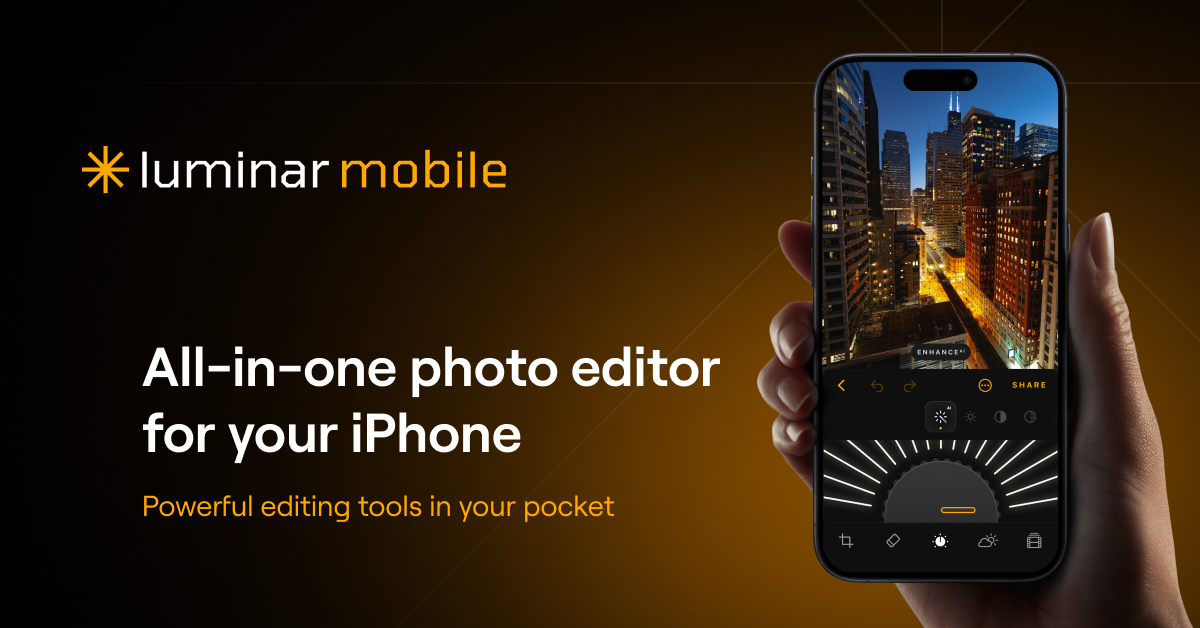
What if editing photos on your phone felt as natural and capable as editing on a desktop computer? That’s exactly what Luminar’s mobile photo editor (available for Android, ChromeOS and iOS) is built for. Whether you’re a photo enthusiast capturing everyday scenes or a working photographer creating content on location, having reliable AI tools on your phone can streamline your workflow and bring more flexibility to your creative process.
Luminar’s mobile photo editor isn’t just another camera app with filters. It’s built specifically for photographers, with tools that focus on enhancing photos so they look real to life, not over-processed or artificial. From subtle corrections to advanced AI-driven enhancements, every tool is designed to support a photographer’s vision while keeping the image natural and true to its original character.
Why mobile photo editing has become essential
Smartphone cameras have evolved into powerful creative tools. Many phones now offer impressive image quality, even in challenging lighting conditions. That means more photographers are using mobile devices not only to capture photos, but also to edit and share them. Even top-level pros use smartphones to take behind-the-scenes photos when teaching, documenting lighting setups, sharing live moments, or posting previews while on location.
However, mobile editing often comes with limitations. Slower apps, clunky interfaces, or basic editing features can make it hard to maintain a consistent creative flow. Luminar’s mobile app addresses that by offering intelligent tools that are easy to use and capable of producing high-quality results.
Built with the same design principles as Luminar Neo and available for both iOS and Android/ChromeOS, the mobile editor provides a familiar experience for existing users. While it doesn’t yet offer full integration with the desktop version, both platforms share a similar editing approach, making it easier to transition between mobile and desktop workflows when needed.
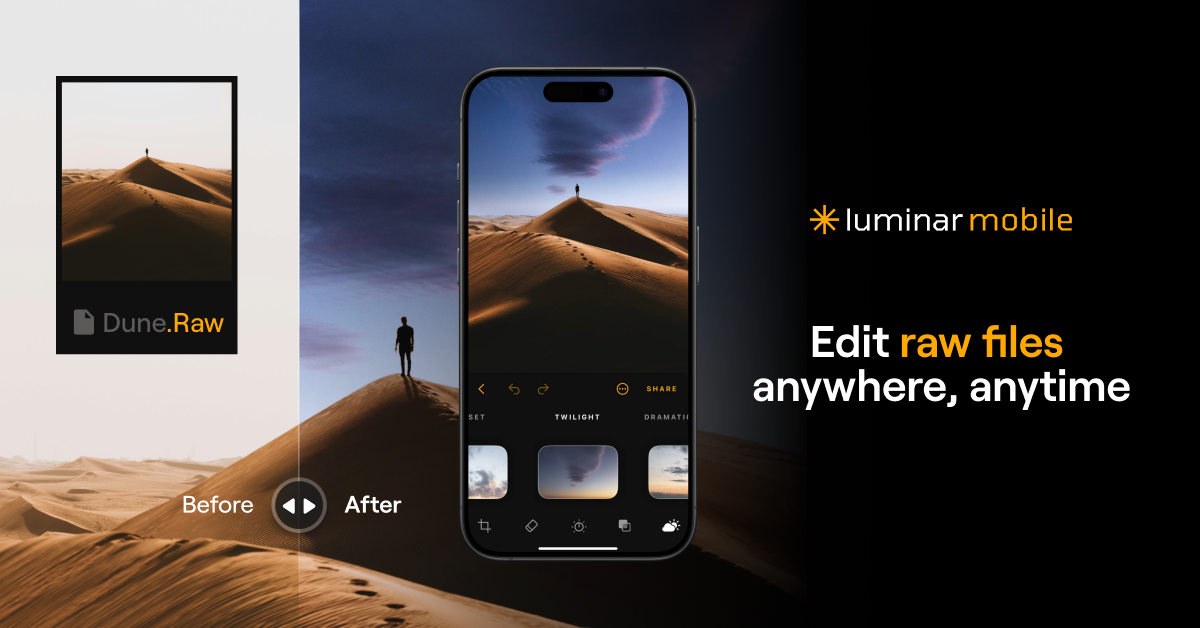
Practical AI features that make a difference
The strength of Luminar’s mobile editor lies in its AI-powered tools. These features go beyond simple filters. Each one is designed to solve common editing challenges in a quick and intuitive way, with adjustments that understand the content of the image.
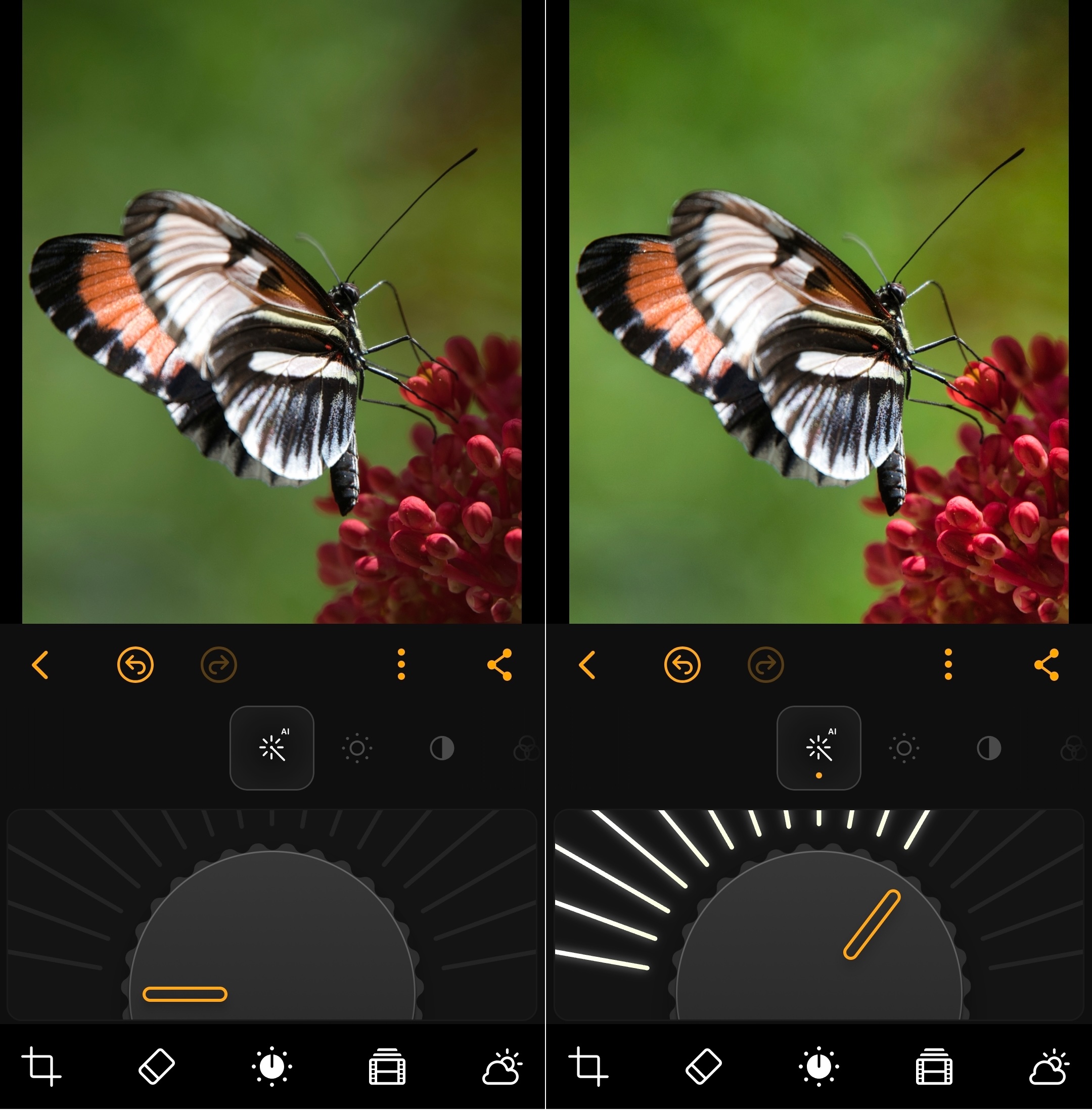
Enhance AI
Enhance AI simplifies the editing process by combining up to twelve core adjustments into a single smart slider. This includes tone, contrast, color, clarity, and more. Instead of spending time making each adjustment manually, the tool analyzes the photo and applies intelligent improvements with just one control.
It’s a fast way to polish an image without compromising detail or making it look over-processed. Enhance AI also works non-destructively, allowing photographers to make changes with confidence, knowing they can always return to the original version if needed.
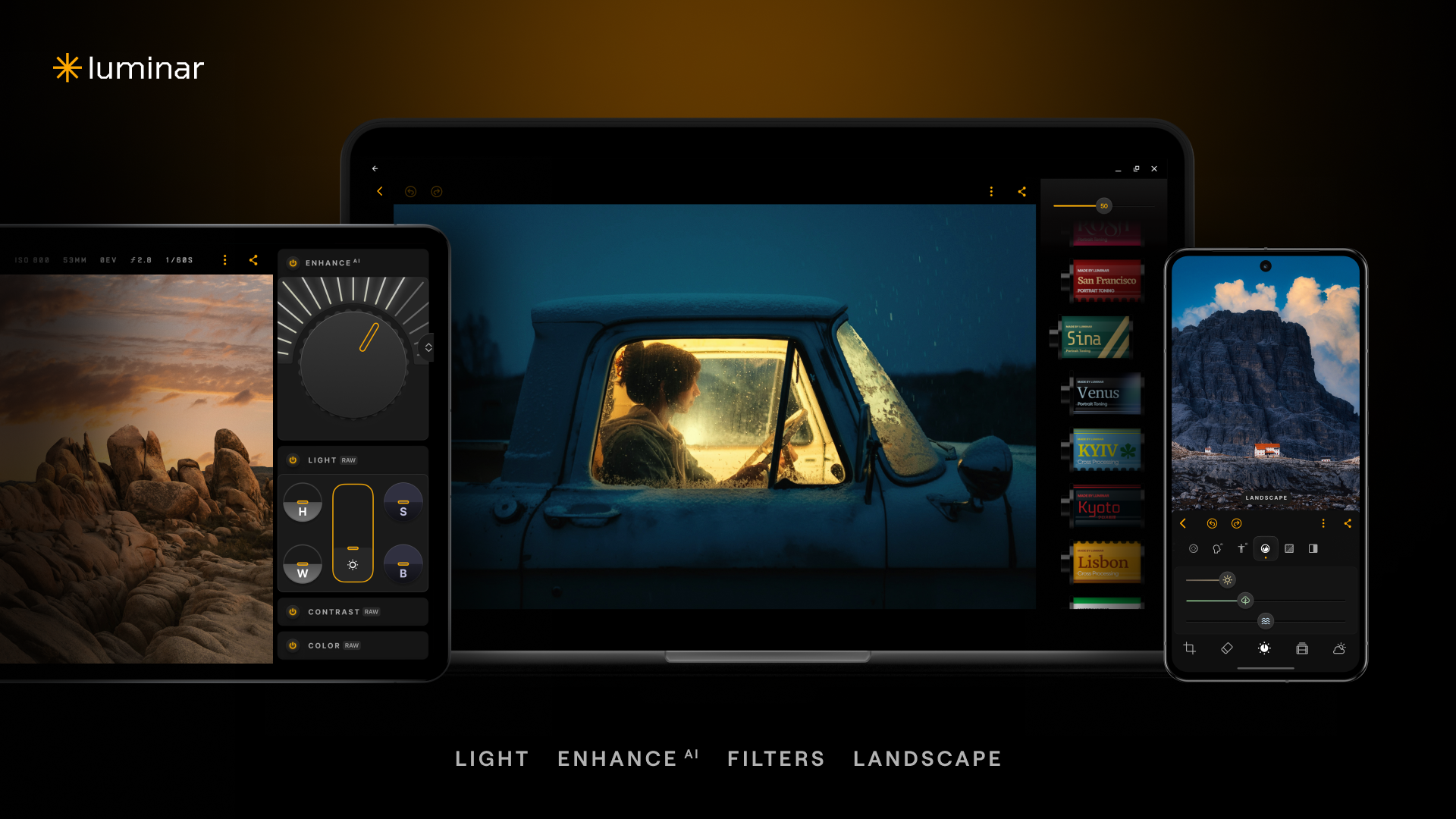
Relight AI
Lighting is one of the most common challenges in mobile photography. Relight AI provides a simple solution by allowing users to adjust the brightness of the foreground and background independently. This helps improve underexposed subjects without overexposing the background, creating a more balanced and natural-looking photo.
It is especially useful for portraits taken indoors or in backlit conditions where traditional edits might fall short.
Sky AI and Atmosphere AI
Sky AI makes it easy to replace a dull or overexposed sky with something more fitting. Photographers can choose from a variety of skies including sunny, dramatic, and even stormy settings. The tool aligns the new sky seamlessly, accounting for reflections and lighting to make the final image believable and cohesive.
Atmosphere AI adds another layer of mood and texture. With options like mist, haze, and fog, it helps create more depth and emotion in a scene. These effects can be applied subtly or dramatically, depending on the photographer’s vision.
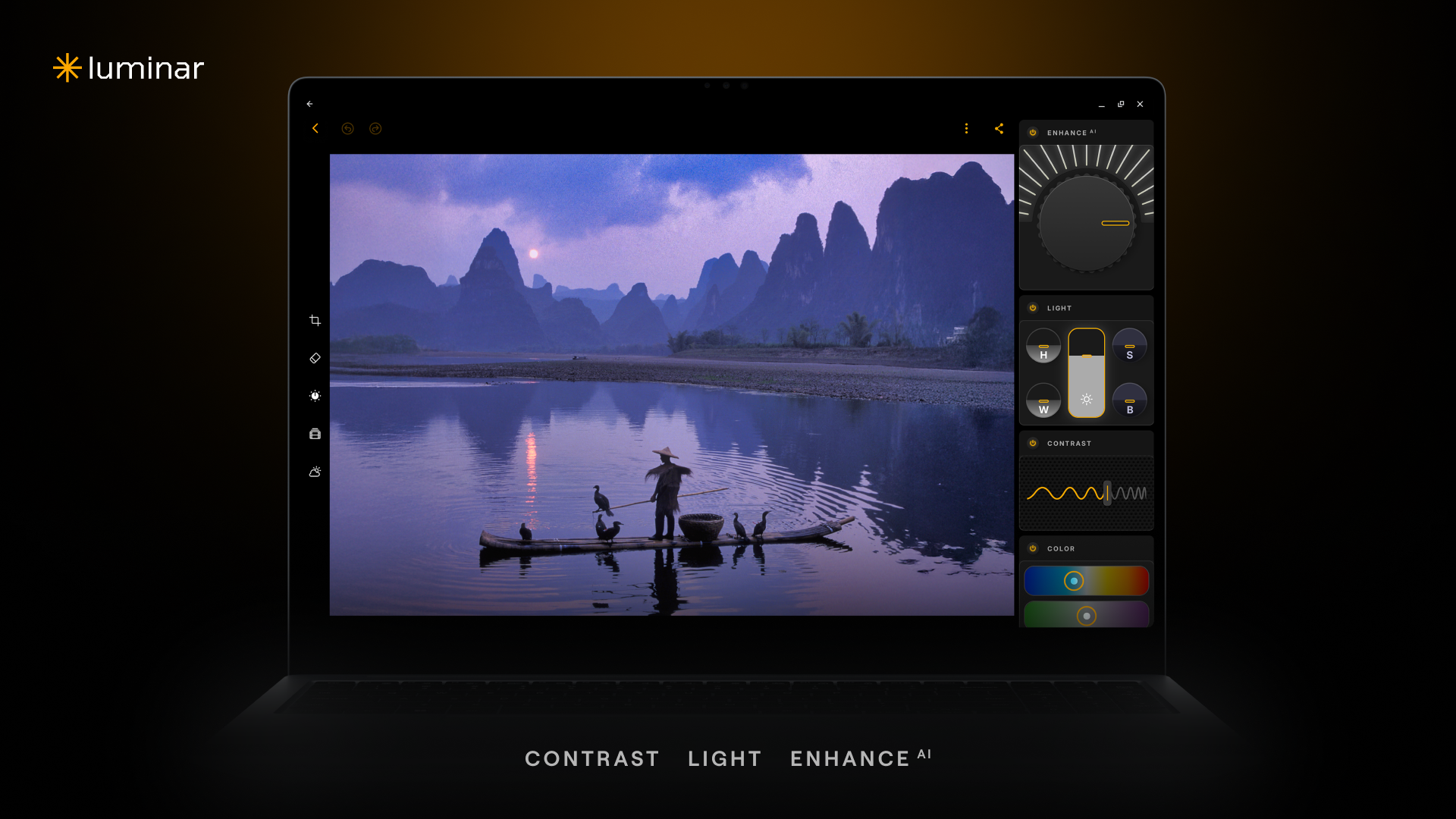
Portrait Tools: Skin AI and Body AI
For portrait photography, the mobile app includes several AI tools designed to enhance without overdoing it. Skin AI gently smooths skin while preserving natural texture and avoiding that artificial look seen in some other apps. Body AI offers subtle adjustments to proportions, helpful in cases where lenses or angles may have distorted a subject’s appearance.
These tools help bring out the best in a portrait while keeping the result natural and respectful to the subject.
Edit anywhere without extra gear
One of the biggest advantages of Luminar’s mobile editor is its portability. There’s no need to carry a laptop or other equipment when editing can happen directly on your Android phone or iPhone. This is ideal for photographers who are constantly on the move, whether traveling, shooting events, or capturing spontaneous moments.
Quick edits can be done in the field, and more detailed work can be finished later on a larger screen using Luminar Neo. This flexibility allows for a smoother, more responsive workflow that adjusts to the needs of each shoot.

A practical tool that fits any workflow
Luminar’s mobile photo editor is designed with simplicity, efficiency, and quality in mind. The AI tools are intuitive enough for photo enthusiasts and powerful enough for professionals, making them accessible without lowering creative standards.
Most importantly, it’s an app built with photographers in mind. The focus is always on helping images look their best while staying true to how the scene looked and felt when captured. From landscapes and street photography to portraits and travel shots, Luminar helps photographers create natural, clean results they’ll be proud to share.
Ready to see what Luminar’s AI tools can do for your mobile photography? Try the app today and follow @luminar_global on Instagram for editing tips, photo inspiration, and updates from the Luminar community.
Sign up for breaking news, reviews, opinion, top tech deals, and more.